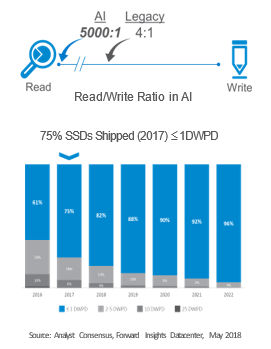Login / Register
At its most basic, Artificial Intelligence (AI) strives to emulate human behavior using a rule-based software structure and observed information to act.
Imagine a pretzel factory. There is a long assembly line that starts with ingredients being mixed in precise amounts, blended, and sent to pretzel-tying machines. Those machines move some of the dough through nozzle-tipped arms that tie the pretzel and drop it onto a moving conveyor. Raw pretzels continue down the conveyor, through salting and coating stations, to rising ovens, the baking ovens, then finally measuring and bagging machines. It ends with packaging and shipping.
The entire assembly line continues to move.
But a bagging machine fails. Then another.
How should the factory floor respond? They can’t just shut down the line (remember the dough in the mixers and the pretzels in the ovens?). Pretzels are still coming down the line to the bagging machines, and they are spilling on the floor.
Sounds tough, right? And that’s a pretty simple example where AI helps. Stop the ingredients feeders, dump the dough in the mixers, and route the baking pretzels through a waste gate. Then fix the baggers. But AI’s uses go far beyond pretzel making – and some of its uses are pretty cool!
Where AI Lives Today
Enriching Human Interaction: There are hundreds of languages and millions of people in the world. Imagine if you could easily speak with anyone. Anywhere. AI lives here and it is inside your smart phone.
Driving Accessibility and Communication: According to textrequest.com, 18.7 billion texts are sent each day around the world. They also note that texting is the most popular form of communication in 2018. And that’s just text messaging!
If we add printed text to speech conversation (and speech to text) we open new opportunities for education access, like more efficient learning (a broader selection of audio books for example). Search is available in more languages, dialects and vernaculars so finding related concepts in text and suggesting richer, deeper content is easier than ever.
Visual recognition and identification: From autonomous cars and obstacle identification / avoidance to fast, reliable facial recognition, AI in connected cars is just one example. Imagine a small child, lost in a crowd. Fast, reliable facial recognition in AI-enabled surveillance cameras could help find them quickly.
Defect recognition: Finding defects (in manufacturing for example) and quickly managing them effectively can speed production and improve quality. AI-based scanning and measurement systems can identify these defects and help manage their lifecycle to improve product quality and user experiences. Silicon device manufacturers can test, scan and check electrical charges at high speeds on each chip to ensure quality; then they can use big data analysis to identify anomalies and address problems quickly and efficiently.
These are just a few examples of what is being done with AI today.

Fast and Vast - the Importance of Hardware in AI
While AI breakthroughs might seem to be all about software (autonomous-learning algorithms, self-driving intelligence, chess playing, etc.), hardware also plays a key role (albeit somewhat behind the scenes).
AI algorithms demand quite a bit from the hardware on which they run for fast, accurate results. Fast storage is critical to feed the massive amounts of use-case specific data to train the model, as are massive arrays of DRAM that work hand in hand with GPUs and CPUs.
AIStorage IO loads have changed dramatically with AI. AI applications read far, far more data than they write. The read/write ratio has moved from about 4:1 with legacy infrastructure to about 5,000:1 or more with AI platforms.
That’s a dramatic change in storage IO, and SSD endurance trends reflect this change.
SSDs express endurance in Drive Writes Per Day (DWPD), a measurement of how many times a given SSD can be filled (written). Prior to widespread adoption of AI platforms, high endurance SSDs (typically 10 to 25 DWPD) were extremely popular. The broader adoption of highly read-centric workloads like AI has changed this dramatically: about 75% of all SSD shipments in 2017 were of ≤1 DWPD drives.

Five Things You Need to Know
Training takes hardware: AI training and validation takes data (a lot of data) and speed. Storage innovations like 3D NAND and high-performance, high-capacity SSDs drive the fast and vast amounts of data it takes to develop, validate and implement AI solutions.
Focused hardware: Break out AI for your industry and use cases with workload-specific hardware like read-intensive SSDs and power-stingy memory to keep smart end-devices intelligent. Micron has the portfolio of memory and storage for your specific needs.
Good design is key: Invest in the right technology for the right job. Read-centric SSDs are a great fit for AI and training. They can store massive data sets with quick access - at a more approachable price point. Low-power, small-size, high-performance memory enables end devices to perform quick AI inference.
Use low-power memory and storage: AI systems need massive storage and compute resources. Power-efficient memory and SSDs that efficiently drive pre-processing, ingest, analytics, and action are high-value, at massive scale, and at the edge.
Micron can help: Micron’s broad portfolio helps you change the vicious cycle of the cloud, datacenter, and intelligent devices on the network edge into a virtuous cycle of smooth data storage, migration and analytics.
Where are you on your AI journey? Reach out via Twitter @GreyHairStorage.
